|
This latest journal entry has been weighing on me for about 4 months. I’ve been wrestling with what to offer my readers. The current status of the world is in a virtual and literal tailspin and there does not seem to be an easy way to overcome the tribulations that have been laid in front of us. Political turmoil, a pandemic that has gripped the world in a way that has not been seen in over 100 years. As we try to adjust, each has come to a place where we question if our personal “adjustment” is enough or will have the right outcome.
Within a mechanical watch, there are a number of ways to affect its performance and each has its benefits and shortcomings. So too are the effects on home-life. Our kids are trying to adjust to a new “normal” of being at home for the better part of what would be a normal school week. Our parents too have their own obstacles. Work schedules have been adjusted to accommodate for a myriad of reasons. Just this past weekend, I was in the shop on a Sunday packing up a clock for a customer when one of my staff called to express his regrets that he would not be back to work the next day as planned. He’d flown to Washington DC late last week to propose to his girlfriend (she said “Yes”), and was delayed on return when the pilot of his plane back to Bozeman had come down with Covid. He was on the next flight Monday morning. We learn to play the cards we’ve been dealt. Sometimes I run across a watch that offers me similar issues. I refer to them as “problem children”. You think, upon first inspection, that this would be a simple service, clean, oil etc… only to find that there’s a proverbial rat’s nest of issues waiting for you. Sometimes this is what life deals you. Face it, work through it and don’t let it bring you down. We can, and should, overcome these obstacles. For without pot holes on life’s highway, there would be no way to learn and grow. As we enter the holiday season, there may appear to be little to be grateful for… but this is not necessarily the case. Look for the small wonders. Appreciate the subtleties that the world offers and embrace them. The great sunset, the good laugh of a joke or the kindness of a neighbor. We may have to dial our expectations down a bit this year… but that might be a good thing, and something to share with others. We’re all in this together. This morning I got a call at the shop from a familiar last name. I don’t think I’ve ever spoken to her directly, but I have spent a good deal of time with her husband. Vic had been a customer of mine for almost all of the 30 years I’ve had a business in Bozeman. A consummate gentleman and a modest and highly generous man to say the least. You could not “sell” him a watch, he bought it. He would not negotiate. And it became a custom for me to simply carve off a discount for him. He had an eye for the finer timepieces but wore them with the most modesty of anyone. 20+ years ago, I mentioned my birthday was around the corner. Vic said, meet me at the airport at 7:30. Without hesitation I agreed, and as usual, I was 5 minutes early. I was there only to be presented with a ride (in the front seat mind you) of his open cockpit bi-plane for a cruise around Bozeman and the Gallatin Valley. When he offered the instruction to take the stick (not a wheel), I never felt more at ease….albeit a little nervous having never flown a plane. He was an avid reader of watch journals and when he was finished with them he would bring them to the shop in a plastic bag for me to read and share with my customers. This was Vic. I’ll miss him dearly. He called me from his assisted living home just two weeks ago to share a joke -he had a very dry, UNIQUE sense of humor- and I shared a joke with him, too. That’s how he was. Offer a laugh, get a laugh. There is nobody in my life that would offer BOTH of his hands to my one as a handshake and say “take care” like Vic. He meant it. It’s a short ride we’re on…. Make the most of what you have and cherish those who reach out to you and bring light into your life. You never know when they will no longer be there to offer their contribution. So from me to all of my readers and customers, be well, enjoy the small wonders that we’ve been given and take heart in the belief that with some minor adjustments, we will see it through. Merry Christmas, Happy Holidays and Happy New Year to all! Dave Years ago, I purchased a watch movement. It had no case, only a mechanism complete with a dial, hands, a stem and a winding crown. This particular movement was produced by Jacques Alfred Jurgensen. J. Alfred was the youngest son of the famed Jules Jurgensen. His watches are highly regarded, sell for thousands, and in some instances -- a good deal north of $10,000. They are exquisite timepieces. I became aware of the family of watchmakers when I was in my late teens as my mentor, Adolph Amend Jr., was a fan of the watchmaking legacy of Jurgensen.. The movement I purchased was from the 1870’s, and it was a classic lady’s pendant style movement. It was built to be housed in a hunter case (covered) and likely made of 18K gold. What happened to the case is history. Likely, it was sadly scrapped for the gold content. So for years, I pondered the idea of making a case for this movement. It was perfectly suited as it had a winding stem at the 3:00 position on the dial. The hand setting mechanism could be easily adapted to work in a wristwatch. The size was nearly perfect too! Where to find a case….. Nowhere. The case had to be made. I tried a machinist. I even tried a 3D printed case, but I was just not satisfied. Then a jeweler friend of mine wanted to give it a try. To my amazement, Richard was able to work his skills and produce a case that not only housed the movement but also offered a wonderful style and uniqueness to it in sterling silver. After some mild adjustments, the Jacques Alfred Jurgensen watch from the 1870’s, long before a watch ever was strapped to a gentleman’s wrist, is now on my wrist and keeping time while offering new life to a once stranded movement. This may not have been one of the most fiscally responsible moves in my life, but then Richard was exceedingly fair with his price. The movement may have laid in a drawer for another 50-100 years as far as I can tell, but was something that needed to be done, despite the cost of labor. I just hope that some time down the road, this timepiece will be appreciated and cherished, not for what it is worth intrinsically, but for the fact that it was resurrected, found a beautiful sterling silver case to be housed in and was faithfully restored to a working historical timepiece once again. I trust that Jacques Alfred Jurgensen would approve.
“The gem cannot be polished without friction, nor man perfected without trials.”– Chinese Proverb5/11/2020
Friction in the world of watches is problema numero uno. As the celebrated watchmaker Abraham Louis Breguet once said, “find me the perfect oil and I’ll build you the perfect watch”. Friction is all around us and it is how we address this occurrence that offers us the means to overcome obstacles. But friction will always be present, no matter how well the oils of lubrication can reduce the daily grind. It is best to accept, deal and persevere in an effort to achieve our goals, dreams and aspirations even amid the trials and tribulations (pandemic speed bumps) thrust upon us.
My last entry in this journal was on January 31, 2020. The world has certainly changed a lot since then. Spring break was canceled and even the alternate “road trip” was waylaid. We saw this pandemic getting more severe and more wide spread nearly every day. Within a few short weeks, phrases like social distancing became an everyday part of conversation. Sanitizer, bleach and (WTH) toilet paper, became hot commodities. Now it is not my place to dismiss the importance of taking precautions, we all must - to a degree. And the dissemination of the information that the media has offered us, no less the POTUS and his staff, can be, and should be something left up to the individual to determine credibility and to then proceed with caution. There has probably been no time in the last century that the US and the world at some level has experienced this level of domestic friction. Being home-bound, away from work, dealing with domestic stresses…. Thank those teachers who offer us a respite from the daily grind of adolescent drama and somehow offer to nurture an education via remote learning. Cheers to the healthcare workers who jumped onto the front lines of this catastrophe. A huge thanks to the agility of the food service people who kept us nourished either with take-out or delivery. They deserve our thanks! I’d personally like to thank my customers, my staff and my wife. I’ve received orders for products during this shut-down from way out of state. I’ve had watches sent from across the country that were in need of repair. My staff was available when I could not take the bulk of the workload. My wife was there to let me attend to business as I needed to. In short, through all turmoil, there is friction, things that make us cringe, and we’d wish that there was an easier way to make them smoother. There is no magic lubrication that can relinquish this uneasiness other than human compassion, perseverance and dedication. A gemstone is just a rock until it is offered friction in an effort to polish it to perfection. Then and only then will the beauty of its true nature be revealed. Be well Bozeman and beyond. Stay healthy and share some compassion to those in need. The world will continue ticking, we’re just here to make sure you’re on time. 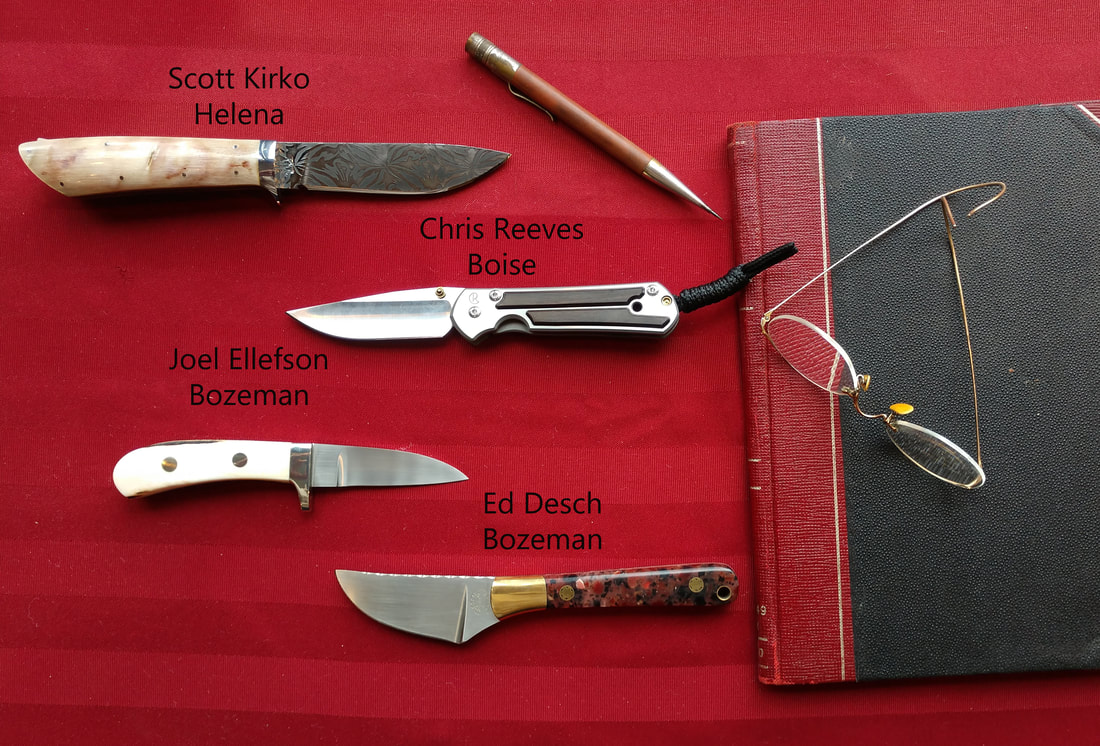 Guys like their watches, their cars….kinda like women love their jewelry and shoes. But this entry is not about shoes, cars, jewelry or watches. It’s about craftsmen who make an accessory, sometimes a necessity, for the dudes. You don’t have to be a rancher or a hunter, this is an accessory that comes with the territory. A knife. Fixed blade, folder, hunter, etc... After years of being married, my wife has almost gotten the hang of it when she asks me if I have a knife in my pocket.The look I throw back at her after she poses the question is kinda like, Big Bag of DUH? Of course I do. To her credit, she did gift me a wonderful Doug Campbell every-day-carry knife a few years back and it’s a darn right fantastic piece. Simple, elegant and functional. A recent “in-shop” study, shows that when you search Custom or Handmade Knives Bozeman, we do not show up in Google. What the heck? We’ve been carrying great knives for over 10 years and we’ve been focusing our stock on relatively locally made blades. Needless to say, today we sold a stunning Scott Kirko knife, a great craftsman in Helena, Montana, so I had to put this out there. At the Last Wind-Up, we stock a wonderful assortment of fixed blade knives for the hunter… bird, trout and big game too. We’ve also got an assortment of EDC (every-day-carry) knives from Chris Reeve of Idaho. Then some more local artisan knifemakers such as Joel Ellifson who’s been making knives in the Gallatin Valley for over 30 years! Ed Desch, knife maker in Bozeman for 20 years, makes a fantastic skinner, fixed blade hunting knife with a beautiful finish and artistry. And this is just a sampling of our current inventory. Have a look at our selection on line or better yet, in person, to experience the fit and finish of some of our local knifemakers. You’re sure to be impressed. And if you’re wanting something a little more special, we can make arrangements. I just placed a custom order for myself from one of our craftsmen for a “personal” folder….. I can’t wait! Over the last 30 years or so of being in this trade, I’ve found it interesting to observe the trends of watches and their size, going from small to large and possibly reverting back to a more wrist palatable size… thank goodness! Back in the day, and I’m speaking of WAY before my time, a gentleman of the 1850’s could be sporting a watch (in his vest pocket) of generous proportions, measuring roughly 2 1/2 inches in diameter and ¾ inches thick. It is no wonder that somewhere along the line, these watches garnished the derogatory term of “turnips”. The bulge in the vest pocket was not quite so great as to elicit a greeting “happy to see you, too”...but these timepieces were robust, hefty and prior to the industrial revolution, mostly handmade. This was the style, manly. Long about 1915 or so, WWI ushered in a new era. Genuine ingenuity spurred on by chance, necessity or a combination of both, created the wrist watch. Prior to this, a man would not be caught dead wearing a “bracelet watch” as it would have been deemed far too effeminate. But in matters of war, one must risk masculine persecution in an effort to save one’s personal hide! So, ladies pendant watches were adapted to be fitted with a strap and could be worn by soldiers in battle more effectively than stuffing a turnip into one’s uniform trousers. On the wrist, the timepiece proved to be more effective and accessible. The above stylistic change was mostly, in my view, by necessity and less a product of public fashion whim. But what was also happening at the same time, was that the pocket watch was becoming more refined. This included stylistic and characteristic changes in the dimensions of the American pocket watch. Initially, the 18 size was the standard, with a case that weighed in at 2-4 oz. The new favorite was the 16 size and even 12 size (1915 era). Compare the difference of these two. The newer watches were becoming slimmer and more elegant. Elements of the dial graphics were changing too. Roman numerals and Arabic appeared to be almost equal in use, but Arabic was slowly taking over. Jump forward 40-50 years and pocket watch use was in decline. The wristwatch had become the timepiece of choice among the general public, who viewed the watch as a tool - not in the pocket but proudly adorning the wrist of a gentleman, refined and manly. They became slim, elegant and in some instances, offering more than just the time of day. As we approach 2020, I have come to observe over the last 30 years, that watch sizes have, on occasion, achieved proportions that could only be described as gargantuan; testosterone infused horological madness on the wrist. The worst part is, most of these oversized tire chain timepieces house nothing more than a dime sized quartz movement costing 1/20th the price of the watch! What’s more, the designers and manufacturers of these “timepieces” care little about the serviceability of their product. This is not to say that finer brands have not gone “big”. Even Rolex and other prominent brands have created oversized watches to follow the trend. And in some cases, I think they missed the boat. When I first opened the Last Wind-Up in 1990, nobody, and I mean nobody, ever asked “is this a 38 mm case or a 40?” This is something that I’ve only experienced in the last 10-15 years and it perplexes me. Please excuse the overtones, but if the watch looks and feels right on your wrist, what more do you need? I have a metric dial caliper if you need one. What you wear is a matter of your own personal taste. Men’s watches of the 1960’s and 70’s are now adorning the wrists of women. Men’s watches have grown and I predict that the proportions of these horological hockey pucks will diminish over time to a more “gender-neutral” size. In the end, it is what YOU want to see on your wrist that matters, and it is much more polite to look at your wrist than your cell phone. Call me old fashioned, but I am! Spring has finally sprung in the Gallatin Valley. And business has been picking up, as usual. Kids are out of school and the foot traffic has been a welcome sight!
Some interesting thoughts about the last few weeks. I’m seeing an upsurge in enthusiasm for the wrist watch, be it in a nostalgic or utilitarian way, I’m not able to accurately ascertain. As some may have thought that the iPhone and other “smart” devices would supplant the use of a wrist adornment to offer the time, I beg to differ based on my field observations. One particularly poignant example of such is the recent reissue of a 1979 Timex Q wrist watch. Three pieces were delivered to my shop on Friday morning and were sold within two hours. To be fair, one purchaser was, and has been, a very enthusiastic customer of mine for a number of years. He committed to two pieces before we even had them. The other was a customer with a Pepsi GMT Rolex. When one of my staff noticed the watch on his wrist, he rightfully offered our “Pepsi” Timex. Sold! Sold out in TWO hours! The call into Timex that afternoon was to order 18 more pieces. Some have already been reserved. Who knew?! And on the other end of the spectrum, I received an email from a client who sent in a family piece, a lovely Universal Geneve steel cased watch that was likely from the 1940-50’s era. I’d restored his inherited watch and was thoroughly ready to start my Monday with a bang after reading his email. This is why I do what I do. Hi Dave: You do incredible work. My grandfather's Universal Geneve looks and runs out-of-the-box new. Absolutely incredible high-quality craftsmanship! Can't thank you enough for bringing the function and shine back to this meaningful treasure. Also - Thank you for keeping items from yesterday alive in the present and moving into tomorrow. The restoration work you do is so important in the all-to-often disposable culture that surrounds us today. And I really appreciate it. Next time I'm in Bozeman, I'd love to stop into your shop and thank you in person, until then - happy trails! -Matt Matt, thanks for your patronage. I trust the watch of your grandfather will be passed down to equally enthusiastic members of the family to treasure for years to come. As I approach 9000 working days since I opened The Last Wind-Up, these stories never get old. For this I am grateful. With as harsh a winter as an easterner might expect a Montanan to live through on a regular basis, one might think that I’d had time to pen a new entry to the journal. Not so. Everything slowed down to a crawl, slower than a tow truck can make it to your home during a snowstorm, slower than you can take the hydraulics off your plowing vehicle in the dark at nearly 20 below zero. But then there’s respite for those who persist. For some it is the first sign of crocus poking through the last dusting of snow. For this body, it was the comfort of the crinkling sound of starched palm fronds on the Mayan peninsula of Mexico with my family, a limited supply of clothing and three carefully selected books in my carry-on, to relish spring break!
I’m one who would prefer to remain a non tourist. I like to leave all of my work at home when visiting such places and then I get the uncontrollable urge to go into the only watch store in town…. Rolex, Breguet, Breitling, Rado, Omega etc…. I speak with the manager, I have to! I feel obliged to inform and commiserate with him (like he does not already know) what Rolex and the other brands are doing to the independent watchmaker. Not only that, he’s fully aware and likewise relatively stoic (in a rollie kinda way) that his display is nearly devoid of anything made of steel in a kinda sporty way. There is hardly one sport model Rolex in his showcase. One GMT and a Yachtmaster. Everything else was meant to impress your martini drinking country club members. I offer some conversation about the industry and we part. He’s doing his best. Back to the shade with a book I retreat and I’m saving the best for last…. or at least I hope so. First - A guy who eludes the law into the wilds of Maine for 25+ years. Second a murder mystery by a local Bozeman author titled the Kiss of the Crazies (liked the local connection). Last one, shrink wrapped and handed to me by J.L.K. Davis, widow of David E. Davis Jr. (see last journal entry), titled “Thus Spake David E.” I told Jeannie Davis that it was saved for this occasion (vacation) about the only time I ever get to read 3 books cover to cover in under a week. This morning, shrink wrap removed, I delved into the world of a guy who lived and breathed automobiles. Sure, he liked outrageously fantastic Italian, German and some British cars but his passion for what he was able to offer his readers was more that just high-ticket Robb Reporting glossy images of four tires on a stunning European roadway that one of modest means could only dream of attaining. David offered to his readers everything from the humble to the extravagant in a way that would make us all appreciate having asked him to dinner. This week long reprieve has offered me an opportunity to reflect that it does not matter what four wheels are under your butt or what’s strapped to your wrist. All have an emotional connection, be it personal, historical, technical or functional. David E. Davis, Jr. reaffirmed that loving what you do is what’s most important. Whether it be your first Seiko dive watch, a gifted graduation Omega or your dad’s grandfather’s pocket watch, they all pull on the emotional heartstrings; the way you felt the first time you got behind the wheel of your parent’s second hand car and pushed the limits or buried the family Subaru in the snow bank. In a timepiece way of thinking, did you soak in the hot-tub, recklessly and not intentionally, testing the water resistance of the heirloom timepiece? Enjoy the part of your wrist (or pocket) that hosts a timepiece…whatever it may be. You will look at it many times a day so it should be something that pleases your eyes and other emotional senses at least. If it offers you other features that pertain to altitude, water depth, timing or phases of the moon, so be it. It’s your wrist, your timepiece, and you will find and gain pleasure from glancing at it every time… no pun intended. 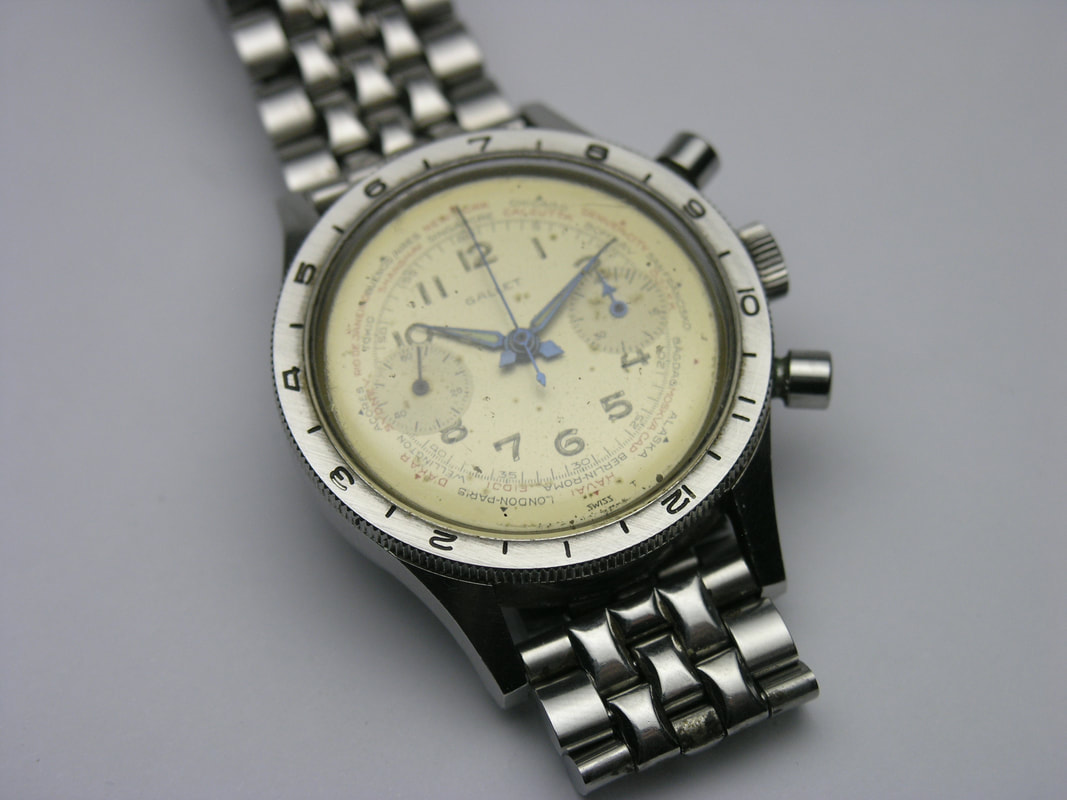 I’ve handled my fair share of watches from iconic manufacturers, Patek, Rolex etc. But when there is provenance, how does the value of that watch become more than just the sum of the parts? This past year, a Rolex Daytona, owned by and years later dubbed the “Paul Newman Daytona”, sold for a record $17,000,000. The watch was gifted to him by Joanne Woodward and inscribed “Drive Safe, Me” He wore that model watch, made it famous and it became known as the Paul Newman Daytona. But this was Paul Newman’s Paul Newman Daytona! OK, I’ve not handled this caliber of watch but in my mind, all watches have a story. The ones that come with some level of provenance can and often bring to the prospective buyer a sense of history or association with a time and place to elevate its value beyond “just a watch”. Albert Einstein's Longines - $596,000, Eric Clapton’s Patek Philippe - $3.6 million, Babe Ruth’s Gruen pocket watch - $717,000, Dave Scott’s Bulova (Apollo 15) $1.3 million. These have all inspired a wonderment that can only pluck a heartstring of emotions to the enthusiast of watches and the famous. Two particular watches in my collection that have historical significance by virtue of who owned them are treasures to me. One of the watches might not even bring $500 on the open market without this connection. But it is this connection that makes this watch important to me and maybe to someone in the future. A Gallet World Timer Chronograph, a tool watch with a model name of Flight Officer. This one having the name of David E. Davis Jr. inscribed on the back. Saying that David E. Davis was an automotive enthusiast is like saying that Fred Astaire liked to dance. Albeit not a “car and driver” watch with a tachymeter scale on the periphery of the dial, this one appealed to me because I took part in the very first Going to the Sun Rally and got a chance to meet the man, a prolific writer in the automobile industry, founder of Automobile Magazine, contributor to Car and Driver and founder of the online magazine Winding Road. On the other end of the scale of horological treasures, sits humble Timex Marlin, the first watch Timex has made in almost 20 years with a mechanical, hand wound movement. After a convoluted series of events that culminated in the Last Wind-Up getting the account, I received this watch as a token from the CEO of Timex, Tobias Reiss-Schmidt. For a watch that retails under $200, this watch means way more to me and will mean more to those who appreciate provenance in years to come because of this connection and the preservation of its history. Assembling provenance can be challenging especially if there are gaps in generations. I’ve experienced this with some watches and yet find it a terribly fulfilling goal. There is always more to garnish and help establish a foundation for the piece, more color to add and more of a completeness to solidify. Get it while you can because there is more value to a piece than just the sum of its parts. Afterall, if the Rolex Daytona that sold for $17 million had not been Paul Newman’s, it might have only brought $50,000. Just my 2¢. Where the most of my business on a day to day basis is assisting customers with relatively simple jobs of replacing batteries and fitting new straps, there are a number of jobs that are clearly more of the passionate, heirloom variety. Collectors will sometimes send me their long overdue watch for service or a father will ask me to restore his father’s vintage wristwatch or pocket watch to be passed on to the next generation. Once and a while I’m offered something special… not the watch necessarily, but the story.
I started thinking about this a year ago when my father, now in his early 80’s, came into the shop and handed me a watch. No fanfare, no gifting episode…. He just handed the watch to me and said “do what you want with it”. OK, maybe it wasn’t quite so off the cuff, but my dad is not known for his pomp. What he gave me was his graduation watch, gifted and engraved to him by his parents. After a few months, the significance of this watch awakened my mind to something intrinsically distinct about a watch. My dad always wore this piece, he looked at it multiple times a day, his schedule was determined and regulated by this humble yet amazingly, intricate machine. The tick that he heard 60+ years ago is the same that echoes in this stainless steel case today. The engagement of his fingers on the winding crown is the same as when I offer it to my wrist for a special occasion. There are very few items in one’s life that can hold these similar features and sentiments. A few weeks ago, a gentleman sent in a watch from Malta, Montana. The watch was passed down to him from his mother. When I first looked at it, I had a feeling… this was going to be a challenge. The watch, a fine example of the factory of Hamilton, was a 992, a railroad grade pocket watch, made to keep very accurate time. Upon initial inspection, I was suspect. The enamel dial had a corrosive material and the hour hand was partially there. Once I opened the case to peer into the movement, it was evident that the watch was a rust bucket. The hairspring was nothing more than a blob of deteriorated steel. Much of the rest of the works were in equally rough condition. I called the owner and asked what he specifically wanted done to this disaster. He told me he wished I could make it run but wanted nothing done to the case or dial… leave the evidence there. Being curious, I inquired. He then told me the story. His grandfather, whom he’d never met, was out feeding his cattle sometime in about 1920, and did not return. A search party was sent out to find him to no avail. The next spring, nothing. Four years later, a skull was found and it was identified by the widow as her husband. Not far from the skull, a small pile of bones and a Hamilton pocket watch was also found. This clearly identified the deceased. The watch is now back with the grandson, happily ticking away and keeping time as it did when his grandfather ventured into the canyon to feed his livestock. I find it immeasurably gratifying to know that although my customer never heard his grandfather speak in person, he can now hear the same ticking of his watch. 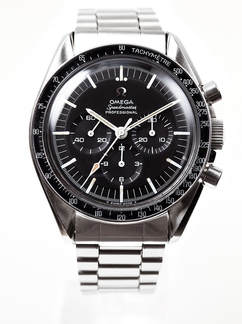 A terribly long winter and wet spring has and is still enveloping Bozeman and most of southwest Montana this year, and has offered ample time to ruminate on the direction of the business, its buying trends, and its future. The most highly attended show for watches and all sub industries in the world, the Basel Fair in Switzerland, offered some insight this year, and the global trade reports likewise actively indicated a healthy market for not only new watches, but vintage pieces as well. But where is the Last Wind-Up in all of this? On our end there’s been a strong influx of watches that have been inherited, passed down from fathers and mothers to sons and daughters alike. These treasured heirlooms are then brought in with the sole idea that they should be preserved, and are met with open arms. All too often most of the recipients of these hallowed pieces have never handled or been taught anything about the mechanical timepieces they receive, and their questions illuminate the newness of the experience. How do I wind it? How often should I wind it? How long will it run? Can I set the hands backwards? I have to remind myself constantly of the words of Barry Marcus, featured in my first entry in this journal, that, “it is not about the watch, it is about the customer.” Sometimes it does seem like these customers can’t see the forest for the trees, but on the other hand I too at times can’t see the trees for the forest. These questions raised to me tell me I’ve been part of this industry and craft long enough that it boggles me to think that this knowledge so basic to me could be completely unheard of to them. Though transversely, I’m not excusing myself from that same pattern of behavior - when technological issues arise in my world, I seek those at least half my age for solutions based on what is to them equally pedestrian knowledge. I like to think the pot and the kettle need to give each other and themselves more slack, and that perhaps exchanges like this instead of being discouraging are just the perpetual give and take that has to happen with unique knowledges. How can any of us expect others to know what they have not been taught, especially if we are not willing to teach them ourselves? Just this evening I was forwarded a news article about how schools are changing over to digital clocks in classrooms because they are finding that students are able to tell the time easier with numbers rather than with hands. This was slightly disheartening to me, to say the least. Yet a number of years ago a customer came into the shop who still wanted analog watches to offer her students so that they would learn to read time with hands. We gladly offered her twenty-some silicone “slap watches” that had numbers and hands. I was pleased that they were headed to a local elementary school, and that not all schools were following the trend claimed in that article. George Keremedjev, long time friend and director of the American Computer & Robotics Museum here in Bozeman, told me a story some years ago about a young high school couple who came through his museum. They were observing the Apollo 15 lunar mission watch, an Omega Speedmaster worn by Dave Scott in 1971. They were apparently disgruntled because they couldn’t read the time due to the of the lack of numerals…. and too many hands! Granted, I’ll give them a little room for the number of hands but really, one could say that reading a watch face without numbers isn’t exactly rocket science! On the optimistic side of things, in the last month we’ve sold a number of vintage Omega watches to young men who are easily 30 years their watches’ junior ...and who had no trouble telling the time regardless of the lack of numerals. That they are buying watches that were made when their parents were kids definitely made my heart smile. When the world and the happenings of mankind seem to be being marked only by the click of a mouse, there is some solace in the idea that there are still those - young and old alike - who deem the tick of the mechanical watch worthwhile. For those of us who do, it is not only a preferred means of marking the passage of time, but also a means of engaging and reinvigorating an appreciation for things that tick rather than click regardless of what era they are from. Most can expect the intrusion of a text from a family member or friend at some point during the day, but there is something intrinsically nostalgic and gentle about being able to choose roll over one’s wrist to check the time of day and take that split second to re-orient. Even more engaging is the concept of winding one’s watch in the morning - feed the dog, take out the trash, and wind your watch before you have to go and tackle your day. Whether some believe it or not we have time for this - we should have time for this - and we should strive to make time for these simple and elegant rituals. They are what keep us connected, engaged, and mindful of our place and our time in this ever hastening world. |
AuthorArchives
May 2024
Categories |

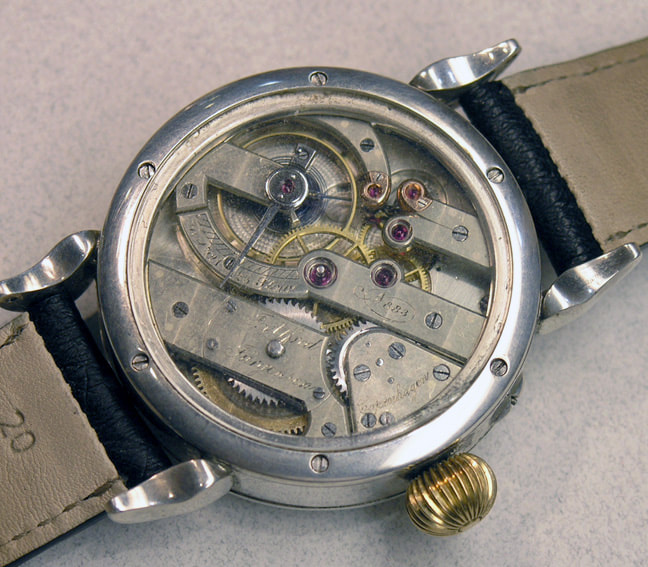
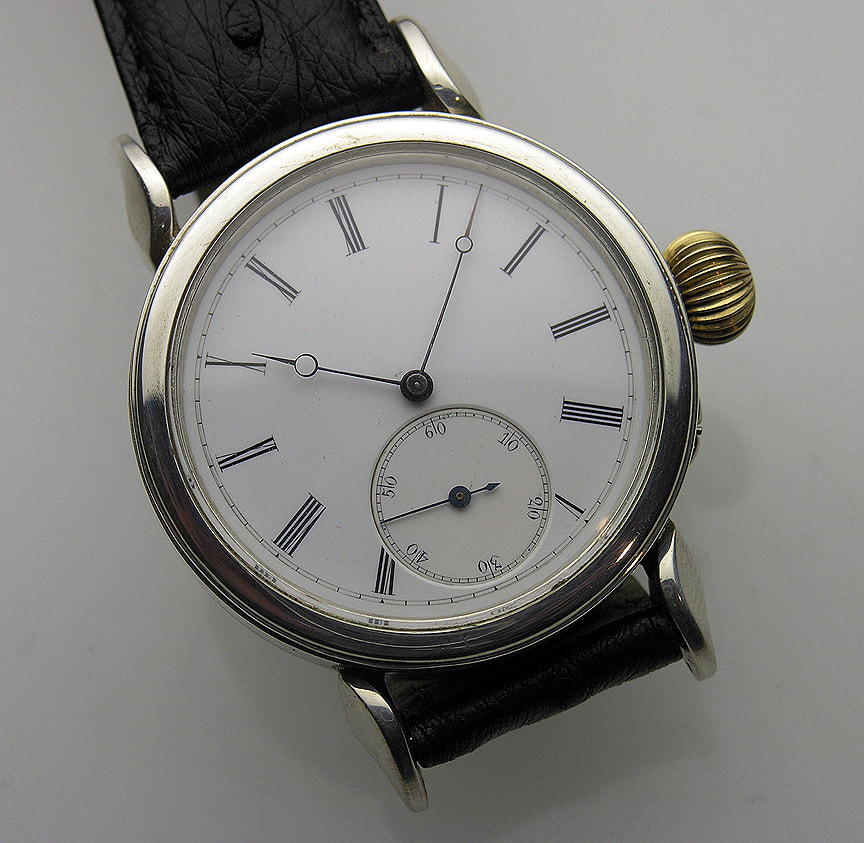
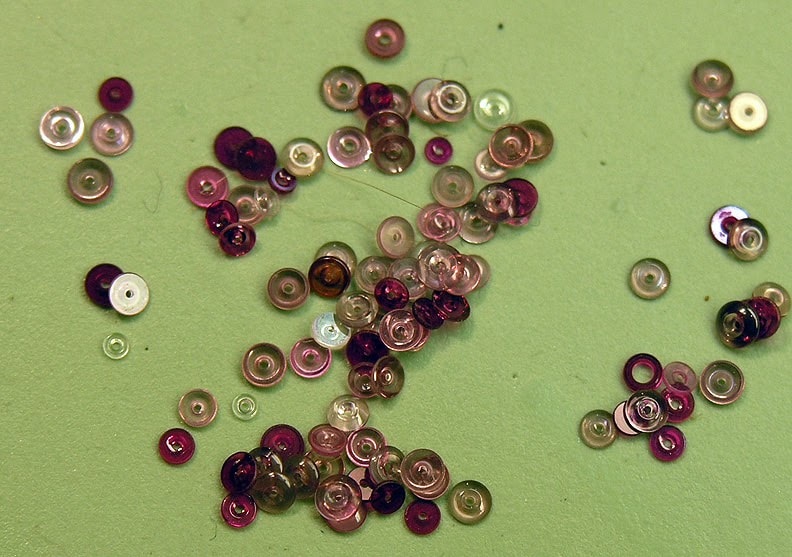
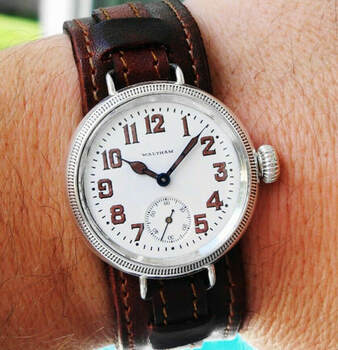
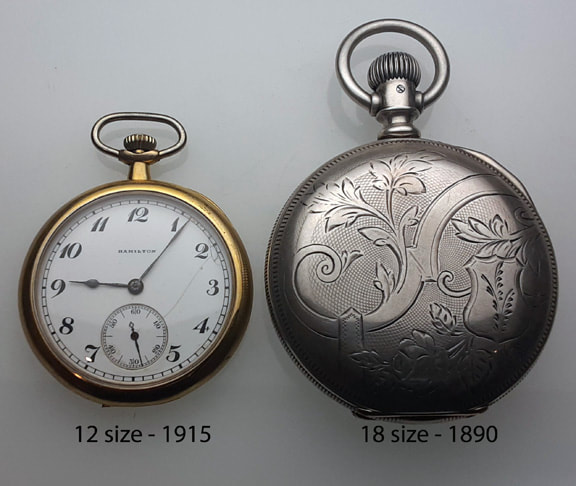
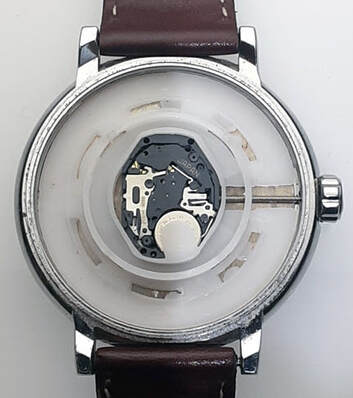

 RSS Feed
RSS Feed